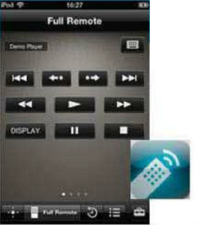K Resolution – Fourfold full HD
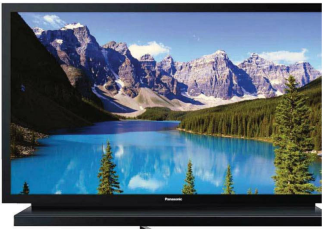
In 2012, 3D would not be the only
focus for TV-panel developers. 2D presentation will undergo a significant
progression. 4K Resolution, or Quad-full-HD, will see its way to succession.
The 4K panels display can achieve 4,096 x 2,160 pixels, which is four times
more than regular full HD resolution (1,920 x 1,080 pixels). Panasonic has
already presented a prototype of the 4K panel and 152-inch screen, which costs
a total 500,000 Euros (that’s about 2 million in MYR). Handier and more
affordable devices could definitely be expected in the coming year. They are
also necessary to present 3D without glasses, which is only possible when
several pixel on the screen jointly represent one pixel of the 3D image (see
picture below). Right now, content for the (mega) high-resolution display is
still unavailable widely. This, of course, may also change. YouTube is already
offering special videos with 4K resolution. Britain’s BBC would like to go the
extra mile during the upcoming Olympic Games in London by planning an 8x full
HD broadcast. That, however, will only be for public viewing with special
projectors – suitable TVs will not be available by then still.
Active polarisation – polarizer in full
HD
Polarizer technology is being
implemented into more and more 3D TV sets lately, mainly because polarised
glasses are more convenient compared to shutter glasses and are theoretically
compatible with any polarised 3D TVs. However, current uses of polarisation
also has a great technical disadvantage, as the image is filtered line by line
for the right and left eye. Thus, the resolution of a 3D video is halved,
resulting in no traces of full HD. To counter this, upcoming 3D TVs with active
polarisation will integrate the image change method that shutter glasses are
known to have. The filters will polarise the light for the right and left eye
in full HD.
Pol-filter
with shutter technology
Televisions with active polarisation
combine the advantages of the polariser and shutter technology together. The
3D-image is transmitted in Full HD.
Short
shutter lag
The TV switches the polarisation in a
quick change.
Polariser
The polariser layer switches over
quickly and in this way generates one image for the right eye and one for the
left eye.
Covenient
glasses
As the TV processes the 3D images,
passive polarised glasses are sufficient.
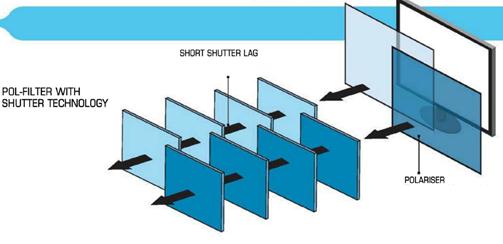
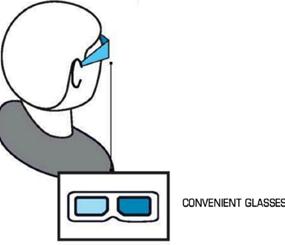
TV
GBit-WLAN – Wireless high-speed network
If you wish to connect a Blu-ray
player, video game console, media centre and a NAS server all without the oft
inconvenient LAN cable, you’re rapidly impinging upon known wireless technical
limits. Though current WLAN standards are capable of sending a HD stream, once
online family traffic kicks in only shortfalls will arise. This would not be a
problem with the coming GBit WLAN. Devices then can roughly transmit with a
data transfer of more than 1GB/sec as per the new IEEE 802 Standard, and a
transfer rate of up to 6.9GB/sec is planned for 2013. Even if the net
throughput currently only amounts to half the amount, it would still be fast
enough for the wireless connection of all communication devices. For GBit-WLAN,
one reallt relies on optimisation rather than new technology – a more powerful
modulation, great frequency bandwidth, and more streams to transfer and receive
data. Only by increasing the modulation from 64 QAM (Quadature Amplitude
Modulation) to 256 QAM, the throughput can be increased by 33%. Furthermore,
the radio channels expand from 40MHz to 160MHz, with transmission taking place
in the 5GHz range with up to eight antennas – broadening the radio channels could
lead to massive distrurbances in other WLAN routers because only two networks
with 160MHz running simultaneously is possible. The MU-MIMO technology
(Multi-User Multiple Input, Multiple Output) is an interesting advancement.
This technology enables the distribution of different data to several clients
at the same time – in an optimum case, there are no breakages in the transfer
when many approach the WLAN. First such devices are coming in mid-2012 at the
latest.
More
antennas
New routers will transmit with 8
antennas in the range of 5-GHz.
Multhuser-MIMO
The router recognises several clients
and can simultaneously provide data optimally at the same time with the help of
MU-MIMO.
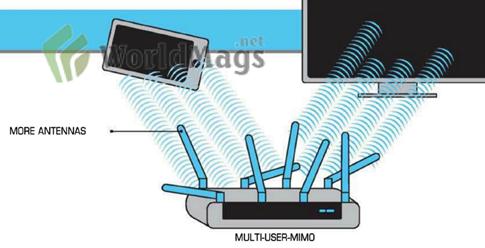
3D without glasses – the third
generation of 3D
In 2010, 3D shutter technology was the
first pathway for bringing 3D to home television. Last year, almost all
manufacturers rely on the cheaper polarised glasses used in theatres instead.
In 2012, glasses-less 3D TVs could be starting out and gaining its own
momentum. Toshiba has already introduced the ZL2, which can present 3D without
glasses at 720p resolution. The image is optimised to nine different viewing
angles in front of the device. Though these overlap, double images can be
generated via and interface. A layer of jelly-like lenses is present in front
of the LCD panel to reflect the images in all zones. The disadvantage to this
technology is that it requires nine pixels on the panel to radiate a point of
the 3D image in all zones. Thus, the panel has to be able to display at least
at 4K Resolution, which is still very expensive at the moment. The ZL2 now cost
around 8,000 Euros – almost $10,785.
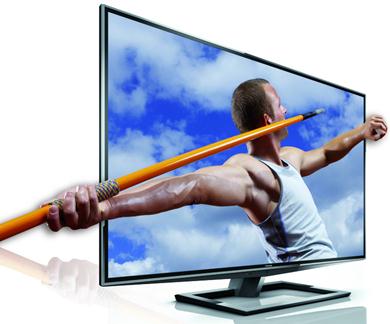
Smart-TV – remote-control apps
Smartphones and tablets are turning
into universal remote controls of sorts via apps in 2012 because, thanks to
Smart TVs, all new televisions have WLAN connectivity which allow smartphones
to connect to them. They could replace the infrared interface of standard
remote controls in the long run. It is also applicable to TV sets which aren’t
Smart TVs themselves. An adaptor can be connected via Bluetooth to the
smartphone which input will be translated into infrared, thus transferrable to
the TV. Through this way, the apps will also solve the problem Smart TVs face
with standard remote controls, as website URLs are hard to type in using the
standard remotes. Smartphones, on the order hand, can display a virtual
keyboard. Manufacturers of these devices mostly provide the previous apps and
are specially adapted to these devices. It is advantageous when, say, Philips
app. You’ll need a lot more apps for devices of different companies.
